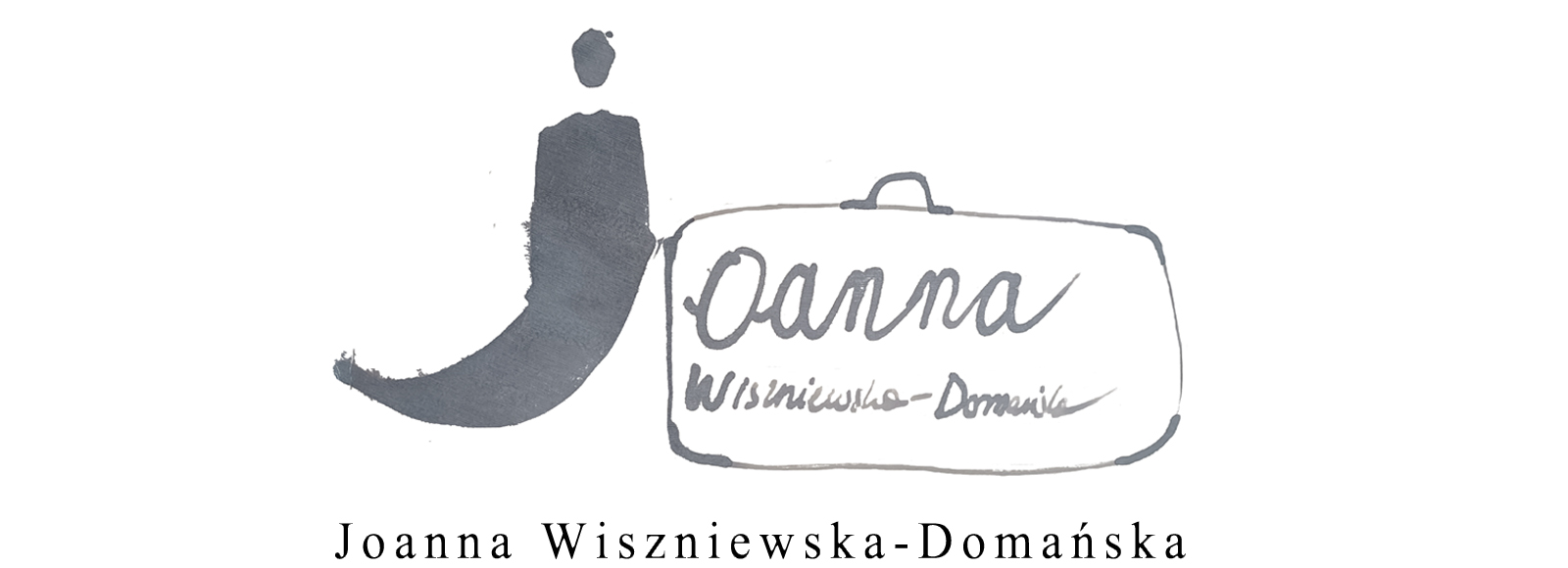Paper city
We are watching the situation in which a person finds himself. He is standing at the water’s edge, in front of a house, in front of a book, a bookcase. The components of the picture are: an object, a human figure and a modest horizon. The role of the connective tissue of the composition is played by rhythm, symmetry, valor, color and several fixed themes, such as: the city, the library, the journey, the book, the labyrinth, the meeting… However, all the themes can be reduced to a single issue which is, as the artist says, the metaphorical journey of man through life. He is looking for solutions, the right directions and values. Truth, goodness and beauty are the goals of the journey of the protagonist of Paper City, an art book whose title covers the entire exhibition.
The presentation of Joanna Wiszniewska-Domanska’s works is a collection of forms so closely linked into a coherent whole that they almost form a single piece. Similarly, we can experience a film, a book, or a concert. The common quality here is black thin lines, arranged in a fine grid. This drawn grid organizes the graphic compositions. The spatial works have the character of a collage of objects lined with scraps of hatched paper. It covers the interiors of suitcases, the surfaces of small chairs, and the walls of miniature houses. The accumulation of lines creates a valence, i.e. darker, heavier places and lighter ones felt as light. Color is dosed sparingly. Graphics, art books and objects seem to be primarily black and white with green and red accents. Other colors quietly accompany, and are watercolor and pastel.
A special role among the elements mentioned in the prints, drawings and collages is played by a suitcase. This lyrical baggage appears as a concrete object – a suitcase or as a drawing of a suitcase. It usually accompanies the image of a person. When we approach the object of the suitcase, we ourselves begin to participate in a particular game of acting out the scene from the painting. For inside the suitcase we encounter a representation of a figure with a suitcase at his feet. And so the imaginary cartoon world of the graphic enters into a non-obvious relationship with the reality of the observer.
The inner harmony of this art is also due to the use of the material paper, which is the primary principle of the artist’s creative world. It is the background and material of poetic settings. Graphics are printed naturally on paper, the author’s art books are made of paper, bookbinding covers, boxes are paper, decorations and costumes of characters are also made of paper.
Used, touched paper loses its sharp edges, turns yellow, but nevertheless it lasts and that is why it is always beautiful, like a stone or a piece of wood, it has its cut from the beginning. In the works of Joanna Wiszniewska-Domanska, it plays a discreet role. It is a substrate for graphics and drawings, but also a material for pasting a collage inside a suitcase, on the surface of a bottle, a lump of house, or a chair. It appears as graphic paper, ordinary photocopy sheets, napkins, parchment, cardboard.
The coherence, unity and intimacy of Domanska’s work is also due to the constant motif of man in the paintings. The figure appears here in the form of a black, motionless figure, with his back turned to the viewer, or as a black and white actor in a surprising mask – a face cut from a color photograph or reproduction of a painting.
The protagonist, with whom every viewer can identify, has its own term in the English language, is the everyman or every man. In 15th-century literature, he was the subject of a dispute between personifications of good and evil, who fought for his soul. In Domanska’s work, man also chooses his path, is the constructor of his fate, and answers questions.
In the graphics, he appears as a person free from relations with thoughts. When the subject, liberated from himself, lightly resides in the fresh space of the picture, one can feel that the invisible lining of all things is nothingness. Seemingly separate phenomena exist here alone and at the same time in a person: trees, a breeze, the sound of waves, heat, a fish, a house, a letter, a dice, a door, a piece of bread. Symbols, myths, dreams, character, melt into a unity, where the division between subject and object virtually disappears. Possibilities flow through each other. The perceiver becomes the phenomenon, and the phenomenon becomes the subject – a sentient being. The phenomenon of movement is described by a melancholy floating balloon, a dress or hair blowing in the wind, which, like waves on the sea or clouds in the sky, cause no disturbance – it’s just natural space without end.
Here, a person and the objects around him are seemingly separate, but bound together by the quality of artistic expression, a system of black lines and dashes.
Water, a tree, a book, even a poem is only a temporary seat of thought.
Haręza, Paper City [in:] cat.wystaw Joanna Wiszniewska- Domanska Papierowe Miasto, Museum of Papermaking in Duszniki – Zdrój, January 17 – July 5, 2020


